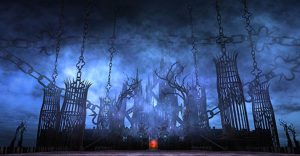The Absolute Worst Gwent Cards In Witcher 3

Gwent is a side activity in The Witcher 3: Wild Hunt that pits Geralt of Rivia against other gamblers throughout the Continent, but not every card should be usable in the player’s deck. Gwent provides players with an alternative way to earn coin without risking life and limb in the wilds. Unfortunately, it can be a challenging game to master without the correct deck. Collecting cards is a task that falls entirely on the player as they progress through the main storyline. Merchants may sell the occasional Gwent card, and opposing players may reward different cards after being beaten. While players may not find much success in their early Gwent-playing days, leaving players to discover for themselves which cards are worth the effort and which should be trashed as soon as they enter Geralt’s inventory.
Witcher 3 introduces the Gwent card game as a part of the game’s starting areas and tutorial. A man in a tavern calls Geralt over and initiates a game, during which a tutorial appears. Players shouldn’t bet too much money on this game, as they’re likely to lose (depending on their experience level). However, the card game can be a fun pastime if players are sick of fighting monsters and picking up side quests. Since many open-world games restrict players to one-beat activities, Gwent’s addition to The Witcher 3 provides a unique form of world-building while helping players find more ways to enjoy the game. Memes surrounding the game run rampant through the community, with most players becoming fond of its addictive qualities and gameplay.
The Witcher‘s Gwent is a card game like Hearthstone that can be played at select taverns across the Continent. Gwent begins with players drawing 10 cards from their deck, with the opportunity to return a maximum of three to redraw. Any cards drawn that put the player’s hand past 10 are immediately discarded. Geralt and his opponent must play to the best of three, with a third-round played if needed. Each deck contains a Leader card, which has a unique ability that often bolsters troops in play. Once both players pass, the round is over, and active units contribute their Strength values to the player’s total score. At the game’s end, the player with the highest score wins and takes the pot. However, there are many strategies that players can use to claim victory, especially with the sheer number of Gwent cards in The Witcher 3. Players looking to build effective and powerful should avoid collecting and playing the following cards.
Triss Is Witcher 3’s Disappointing Gwent Hero Card

The Witcher 3‘s Triss is a romance option and the focus of serious debate in the gaming community, but she is also one of the worst Gwent Hero cards available. While some Hero cards have astounding abilities to deal massive damage or add vast amounts of Strength to a player’s score, Triss is quite useless. Her card features seven attack power – much less than other Heroes – and has no ability beyond ignoring Special Cards and abilities. Since most Hero cards (and some non-hero cards) offer more damage and abilities than Triss, players should try to find other, more valuable cards to include in their Gwent decks (like Yennefer of Vengenberg).
Redanian Foot Soldiers Are Witcher 3’s Most Useless Gwent Cards

The Witcher 3‘s Gwent games often start slowly, with Geralt and his opponent playing cards with only one or two Strength points to get the ball rolling. However, like all card games, one card type has to be the worst. The Redanian Foot Soldiers provide players with one attack point and no extra ability to make them last. Since Gwent is a game of limited resources, players need to make the most of every move. Other early-game units like Skellige’s Svalblod Ravager or Monsters’ Ghouls provide more damage and Strength with additional abilities to harvest more points. Dedicating any deck space to Redanian Foot Soldiers is a serious waste that players should avoid if they want to claim victory.
Witcher 3’s Elf And Onion Soup Can Give Negative Points In Gwent

Several cards in Gwent’s base game and expansions depend on RNG, with players engaging in more risk-reward tactics to beat their opponents. Elf and Onion Soup is one such card, forcing players to destroy two allied units with the same border color and play a single unit of the same color from the player’s faction or neutrals. Trading two cards for one can be an efficient method to clear the battlefield of early-game cards, but it can also sabotage players’ scores at vital moments.
When the Elf and Onion Soup card finds its way into a player’s hand in The Witcher 3, there’s no guarantee that useful faction or neutral cards will be available. This card takes up an essential slot in the player’s hand and can result in negative points depending on the unit replacing the destroyed cards. If players want to leave their victories to skill instead of chance, it’s a good idea to banish this card from Geralt’s deck as soon as possible.
White Frost Destroys Players’ Artifacts In Witcher 3’s Gwent

Gwent Artifacts are the equivalent of Witcher 3‘s special upgrades and items, ranging from traps, spears, and other objects that don’t provide Strength but remain on the board with an active ability. Most decks should feature an Artifact of some kind that bolsters friendly units or sabotage the enemy’s army. Unfortunately, the White Frost card destroys all Artifacts and can undermine a perfectly crafted strategy. If this card only attacked hostile Artifacts, it would be an extremely powerful and useful unit. However, since it can ruin a player’s victory, it should be discarded. The only way players can reliably use White Frost is if their opponents have Artifacts and they don’t, but it may not claim victory even under those circumstances.
Clear Skies Has No Purpose In Witcher’s Gwent

While Gwent mechanics and gameplay systems in Witcher 3 can be confusing, many cards don’t experience the same playtime as others. For example, players and NPC opponents may abandon weather cards to deploy more units, artifacts, or Heroes. As a result, Clear Skies becomes useless and should be exchanged for other cards available in the game. Additionally, protagonist Geralt can negate an opponent’s debuffs with other cards that add to his Strength and score. As one of the game’s most underused strategies, players should avoid including Clear Skies into their decks and instead utilize some of Gwent’s Monsters that synergize with dozens of other cards available at their disposal.
The Witcher 3: Wild Hunt has many side quests and missions for Geralt to embark on, but Gwent provides a pastime that’s low stakes ensure anyone and everyone can enjoy it. Games like Hearthstone have amassed tremendous followings and popularity, but Gwent is accompanied by hundreds of hours of content. The freedom to explore the wilds or take shelter in a tavern playing cards is an excellent strategy to retain players. Witchers wishing to make the most of their Gwent careers in The Witcher 3: Wild Hunt should steer clear of the listed cards and play smart with their hard-earned Crowns.
About The Author


















